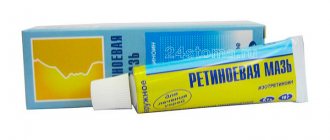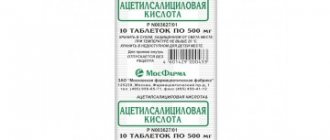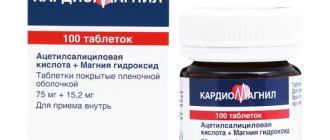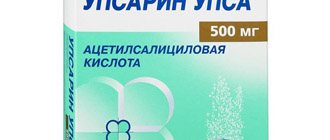All bile acids produced by our liver are toxic. And to be more precise, they belong to the group of cytotoxic substances - those that can harm cells. Why does our body produce something that can have a toxic effect? Everything is as simple as possible here: to protect yourself from numerous potentially dangerous microorganisms. In other words, bile copes excellently with microbes, which means that without it our body simply would not be able to function normally.
However, there is only one exception to this rule. We are talking about ursodeoxycholic acid, which is non-toxic. Today we will talk about this unique substance in more detail, and also mention its medicinal analogue and find out in what cases its use is necessary.
Ursodeoxycholic acid: what is it?
What determines the non-toxic nature of this substance? First of all, it refers to tertiary acids, which are processed by our body from toxic primary ones. This substance is notable for the following:
- it fully performs its work and, even if it is non-toxic, participates in the digestion process along with other acids, and more specifically, it is responsible for emulsification, that is, the breakdown of fats into small particles;
- along with its closest “relative”, chenodeoxycholic acid, prevents excessive synthesis and deposition of cholesterol on the walls of the gallbladder, which means it prevents the formation of new gallstones and even helps to reduce existing ones.
But at the same time, the content of UCDK in human bile is extremely low and barely reaches five percent. In the middle of the last century, researchers made a sensational discovery; they were able to find out that there is almost 50 percent of this substance in the bile of bears. Naturally, this fact could not remain without due attention, and people actively began to be treated with the contents of bear gall bladders. This went on for quite a long time until the same restless researchers managed to synthesize this substance artificially.
Special instructions for the use of the drug Ursodeoxycholic acid
Successful conservative treatment of cholelithiasis is possible in the presence of purely cholesterol (X-ray negative) stones with a diameter of no more than 1.5–2 cm, preserved gallbladder function, patency of the cystic and common bile duct; stones should not fill more than half the volume of the gallbladder. To accurately determine the nature of the stones, it is recommended to perform radiography in combination with ultrasound. To prevent recurrence of cholelithiasis, treatment must be continued for several months after stone lysis. During treatment, transaminase levels should be dynamically monitored at least once a month; if their activity is increased, it is recommended to reduce the dose. Treatment should be discontinued if values do not return to normal within 1 month.
Acid protects the liver from alcohol
First of all, UCDK helps to neutralize all types of harmful effects of alcohol on the body:
- Protects the liver from the negative effects of substances contained in alcohol on cell membranes. There is a double effect here: on the one hand, the acid prevents harm from the entry of new micelles, and on the other, it neutralizes the effects of those already present.
- Restores bile flow. This effect becomes achievable by reducing the concentration of toxic bile acids. In turn, this effect ensures the restoration of the normal digestion process, and also normalizes the size of the liver. This has an extremely positive effect on a person’s condition, in particular, it relieves him of the unpleasant feeling of heaviness and pain in the right side.
- Antioxidant effect due to a decrease in the number of free radicals in the body, and therefore the cessation of cell death due to oxidation.
- Reducing the amount of cholesterol in bile, which is achieved by reducing its absorption in the intestines, synthesis in the liver, and therefore release into bile. Along with this, there is an increase in the solubility of cholesterol in bile.
- Normalization of the immune response, which is especially important for hepatitis. We are talking about reducing the likelihood that the immune system will begin to fight its own cells.
Ursodeoxycholic acid in gastroenterology
The use of dried brown bear bile in the treatment of diseases of the liver, stomach, and intestines goes back centuries (ancient China). The modern stage of studying the influence of bile acids on the organs of the gastrointestinal tract begins in 1902, when the German researcher O. Hammersten described the bile acid of the polar bear and first introduced the term “ursocholic acid”. Since then, the first drugs began to be used that showed an effect in liver diseases. It was found that ursodeoxycholic acid, which was synthesized by Japanese scientists in the mid-50s of the last century, has a healing effect.
From this time on, a systematic study of bile and clinical assessment of the effectiveness of UDCA in patients with cholelithiasis and liver diseases began.
Human bile contains bile salts consisting of chenodeoxycholic, cholic and deoxycholic acids. It also contains UDCA, but its normal content does not exceed 5% of the total pool of bile acids (1, 2).
UDCA is a tertiary non-toxic bile acid that is synthesized in the liver from 7-ketolithocholic acid, which is a product of bacterial oxidation of chenodeoxycholic acid. UDCA is more polar and hydrophilic compared to other bile acids, which eliminates the possibility of the formation of micelles toxic to liver cells.
Experimental studies have shown that when using UDCA at a dose of 10-15 mg/kg per day, the content of toxic bile acids decreases and UDCA becomes the main component of bile (1, 3, 4, 5).
Metabolism of UDCA
In the liver, UDCA is effectively conjugated with glycine, taurine, N-acetylglucosamine, glucuronic acid and sulfate. After this, it enters the bile.
In the small intestine, conjugates are passively absorbed in the terminal part of the small intestine - actively absorbed.
They enter the liver again and enter a new cycle.
Unabsorbed conjugates in the colon are metabolized by bacteria and excreted primarily in the feces.
Known mechanisms of action of UDCA used in clinical practice
I. Choleretic effect:
- displacement of a pool of toxic hydrophobic bile acids due to competitive capture of receptors in the ileum;
- stimulation of exocytosis in hepatocytes by activation of Ca-dependent L-protein kinase, which reduces the concentration of hydrophobic bile acids;
- induces bicarbonate choleresis, which increases the excretion of hydrophobic bile acids into the intestine.
II. Cytoprotective effect:
- is integrated into the cell membrane of the hepatocyte, which becomes more resistant to the damaging effects of toxic agents.
III. Anti-apoptotic effect:
- reduces the concentration of ionized Ca in cells, which prevents the release of cytochrome C from mitochondria, which, in turn, blocks the activation of the cascade and apoptosis of hepatocytes and cholangiocytes.
IV. Immunomodulatory effect:
- reduces the expression of HLA class I molecules on hepatocytes and HLA class II on cholangiocytes, which prevents the activation of cytotoxic T lymphocytes;
- reduces the synthesis of immunocompetent Ig M, which reduces the production of autoantibodies;
- both mechanisms lead to a decrease in immunopathological reactions;
- reduces the production of pro-inflammatory cytokines (IL - 1, 2, 6, TNF-ά, INF-γ).
V. Hypocholesterolemic effect:
- reduces the absorption of cholesterol in the intestine;
- reduces cholesterol synthesis in the liver and reduces its entry into bile.
VI. Litholytic effect:
- reduces the cholesterol content in bile and reduces its lithogenicity, ensuring the dissolution of formed stones and preventing the formation of “new” stones.
VII. Antifibrotic effect:
- inhibits the proliferative activity of fibroblasts stimulated by platelet-derived growth factor;
- reduces the functional activity of stellate cells associated with the absorption of apoptotic bodies;
- reduces hepatocyte degeneration and cholangiocyte proliferation (6, 7, 8, 9).
The mechanisms of action of ursodeoxycholic acid (Ursosan) listed above are a physiological basis in clinical practice. Already today, for many liver diseases, UDCA drugs are the treatment of choice, for some - in a combined treatment option, which significantly improves the prognosis of treatment; for some – as symptomatic therapy.
If we consider the modern pathogenesis of liver diseases, UDCA affects the main pathogenetic mechanisms of the development and progression of diseases and has no analogues in terms of its mechanism of action. Already, UDCA has significantly improved the prognosis of many liver diseases and has opened up prospects for even wider use.
In addition to liver diseases, bile and its components are involved in the pathogenesis of many diseases of the digestive system (GERD is that variant where the main component of damage is bile acids, reflux gastritis, cholelithiasis; some variants of pancreatitis, cholesterosis of the gallbladder, biliary dyskinesia, chronic biliary insufficiency, functional dyspepsia, prevention of colitis, colon cancer).
In total, UDCA preparations are currently used in the treatment of more than 40 diseases and functional disorders of the gastrointestinal tract.
Results of treatment
with U rsosan (own data)
The presented data are based on the study and treatment of 600 patients with various pathologies of the digestive organs:
Treatment of patients with gallbladder pathology
A prerequisite for the dissolution of cholesterol gallstones is the oversaturation of bile with cholesterol, and the following are considered as contributing factors:
- an increase in the proportion of deoxycholic acid in bile;
- the presence in bile of substances (glycoproteins) that promote crystallization and accelerate the formation of cholesterol monohydrate crystals;
- impaired emptying of the gallbladder.
Ursodeoxycholic acid affects all pathogenetic factors. There are also necessary conditions that must be met:
- gallstones must be cholesterol;
- the maximum diameter of the stone should not exceed 10 mm;
- the gallbladder should function normally;
- the lumen of the gallbladder should be no more than half filled with stone;
- the cystic duct must be patent;
- Since recurrence of stones is possible, UDCA preparations can be an effective method of prevention.
Group I – 60 patients (40 women, 20 men) were assessed for the effectiveness of Ursosan treatment; the average age was 50.7 ± 3.1 years (from 31 to 72 years).
Nature of the pathology:
- biliary sludge – 30 patients;
- multiple stones (3-5 mm) – 20 patients;
- multiple stones (6-10 mm) – 6 patients;
- single stones (6-10 mm) – 4 patients.
Treatment regimen: Ursosan 10 mg/kg/day – for patients with cholelithiasis; 5-7 mg/kg/day – for patients with sludge. The treatment period was 6-12 months. Ultrasound monitoring – once every 2-3 months.
Treatment results:
- complete dissolution of stones and sediment – 50 patients;
- reduction in stone size – 6 patients;
- without dynamics – 2 patients;
- increase in stone size – 2 patients.
Six patients in whom a decrease in stone size was recorded required continued treatment at the same doses or an increase in the dose of the drug with normal tolerability of treatment. The average dissolution time was 1 year 3 months. The dose could be increased at an earlier time (6 months of therapy, if the reduction in stone size or total volume was less than 50% of the initial values). 4 patients who did not show a tendency to dissolve stones were operated on within a year. Their stones were bilirubin in nature. The treatment was well tolerated; in 4 patients there was a tendency to loose stools, which was temporary and did not require discontinuation of treatment or dose reduction.
In general, the results of treating patients with cholelithiasis with Ursosan should be assessed as very good, and if the indications are followed, this method can be considered as an alternative to surgery.
Group II – patients suffering from cholesterosis of the gallbladder (30 patients). Gallbladder cholesterosis (GC) is a disease characterized by impaired cholesterol metabolism with its predominant deposition in the wall of the gallbladder. The reason for the deposition of cholesterol into the gallbladder wall is not entirely clear. There is a point of view that this is one of the variants of cholelithiasis. This seems unlikely. They (gallstone disease and chronic gallbladder disease) occur as two independent diseases, and if a stone is formed during chronic gallbladder disease, it is during the period when the contractility of the gallbladder is noticeably reduced. The only thing that truly makes them similar is the effectiveness of treatment with bile acid preparations, and then only in cases of “cholesterol” stones.
Form of the disease: 20 patients – reticular polyposis form and 10 patients – diffuse reticular form.
The average age of the patients was 45.6 ± 7.3 years (range: 19 to 70 years). There were 13 women, 17 men. In men, the disease develops at a younger age.
Treatment regimen: Ursosan 15 mg/kg/day; treatment period from 6 months to 1.2 years in therapeutic doses; maintenance doses – 7.5 mg/kg/day (options: permanent, intermittent).
Treatment results
The overall effectiveness of treatment with restoration of the gallbladder wall was achieved in 70% of patients. The average treatment period was 9 months (for some patients – up to 6 months, for others – 1-1.2 years). In young patients, the period of effective treatment was shorter: 5-6 months. Patients with incomplete effect were transferred to maintenance treatment. The effectiveness of this treatment was assessed from the standpoint of maintaining the achieved effect (by cholesterol deposits in the wall and by increasing the contractility of the gallbladder). There was no effect in 3 patients (10%). We associated this with a sharp decrease in the contractility of the gallbladder and the failure to achieve an effective concentration of UDCA in it. These patients were transferred to surgeons for cholecystectomy.
In general, we consider Ursosan therapy for patients with chronic gallbladder disease to be very effective.
The question of indications for treatment, doses, duration remains unresolved; maintenance treatment regimens have not been developed. But the prospects for treating patients with chronic gallbladder disease with UDCA drugs are encouraging.
Results of treatment with Ursosan for patients with chronic liver diseases
Primary biliary cirrhosis (PBC) (non-purulent destructive cholangitis, in which inflammatory changes primarily affect the interlobular and septal bile ducts with gradual spread to the periportal fields; the second component of the disease is fibrosis, gradually progressing to cirrhosis of the liver).
Complications of the disease are portal hypertension with all its consequences and progressive liver failure. The disease is most likely based on autoimmune processes associated with the destruction of the bile ducts.
Diagnosis is based on the detection of antimitochondrial antibodies (AMA), antinuclear antibodies (ANA) in combination with a specific morphological picture characteristic of PBC. The most persistent biochemical change is an increase in alkaline phosphatase (ALP) and GGTP levels. Cholesterol levels also increase, but this is not permanent.
The main drugs for the treatment of PBC are cytostatics and immunosuppressants, but their treatment is also considered symptomatic, since the etiology of the disease remains unclear. In the range of symptomatic therapy, ursodeoxycholic acid preparations are gaining an increasing place. Since their effect turned out to be dose-dependent, the use of effective doses made this therapy a priority. The choice of drug doses used depends on the stage of the disease.
Our experience with Ursosan treatment includes 22 patients with PBC. All patients were women, the average age was 53.1 ± 3.2 years. The diagnosis was made on the basis of the biochemical syndrome of cholestasis, which was recorded for 2-5 years, and the presence of antimitochondrial antibodies (AMA) in all patients (titer 1:80 – 1:640). In some patients, a puncture biopsy was performed with a morphological study of the biopsy sample. All patients underwent virological tests (B, C, G, TT): according to PCR data, the result was negative for all.
Ursosan was prescribed at a dose of 15 mg/kg body weight, treatment was carried out for a year (according to the protocol), biochemical monitoring every 3 months:
In the first 3 months, the “cytolysis syndrome” significantly decreased or completely normalized:
- ALT – 103.7 ± 2.3 → 46.4 ± 8.7;
- AST – 67.0 ± 4.9 → 33.2 ± 7.7.
The level of cholestasis decreased:
- ALP – 369.9 ± 4.2 (initial) → 280.3 ± 37.2 (after 3 months);
- GGTP – 207 ± 3.3 (initial) → 99.9 ± 6.4 (after 3 months).
Subsequently, the positive dynamics continued with normalization of cytolysis and a noticeable decrease and stabilization of cholestasis syndrome and AMA levels.
Subsequently, we continued to monitor patients and provide maintenance treatment with Ursosan at a daily dose of 500-750 mg. When trying to cancel treatment, as a rule, biochemical parameters and AMA titer increased, often exceeding the initial values, and required a transition to therapeutic doses or (in 4 patients) to a daily dose of Ursosan 20 mg/kg/day.
To date, the observation period has been 5-6 years, the condition of the patients is stable, and their health is quite satisfactory.
In general, we assessed the results of treatment with Ursosan as very positive. A comparative analysis with data from previous years (treatment with colchicine, metatrexate) showed the advantages of treatment, the outcome and course of PBC - against the background of UDCA. I would also like to note the lack of relief in this group of patients.
Chronic hepatitis C, cholestatic variant - 30 patients who received Ursosan at a daily dose of 12-15.0 mg/kg/day.
Chronic alcoholic hepatitis, cholestatic variant – 30 patients. Ursosan was used in a daily dose of 15 mg/kg/day.
Chronic hepatitis B – 30 patients (20 of them had a cholestatic variant).
Primary sclerosing cholangitis – 2 patients, productive phase, both patients had cholestasis, clinically itchy skin.
Patients with chronic viral hepatitis were not able to receive antiviral therapy, and Ursosan therapy was considered symptomatic.
The average age of the patients was 51.2 ± 8.6 years (with a range from 24 to 70 years), the duration of the disease was on average 10.5 years (diagnosis in the institutions of the Medical Center was carried out through clinical examination at the city hospital; in most cases, the motive was hospitalization and the “transport” diagnosis was obstructive jaundice). The degree of activity of the process was moderate - the level of transaminases was 4-5 norms, cholestasis was moderate. In the alcoholic hepatitis group, cholestasis was pronounced: ALP - 3-5 norms, GGTP - 10-15 norms.
The duration of therapy with therapeutic doses was 6 months and 1 year for patients with PSC.
Tolerability of therapy, in general, was normal; in 4 patients, loose stools were noted, which did not require a change in the nature of treatment.
The effect against skin itching was achieved as quickly as possible (2 months); dynamics of biochemical parameters - by the third month of treatment, with this trend maintaining by the sixth month. In patients with alcoholic illness, cytolysis syndrome had a noticeably faster dynamics compared to viral hepatitis. In 6 patients with ALD who showed slow dynamics of cholestasis syndrome, large doses of UDCA (20 mg/kg/day) were used. Patients with PSC demonstrated a slow reaction both in relation to skin itching and in relation to the biochemical symptom complex.
Complete discontinuation of the drug after 2-4 weeks led to a return of process activity in 1/3 of patients and required resumption of treatment, especially in patients with itchy skin.
Analysis of these cases showed that the dynamics of the biochemical symptom complex was slower. From our point of view, this clinical situation requires either a slower withdrawal of treatment or transfer of patients to maintenance treatment at a daily dose of 250-500 mg of Ursosan.
Experience in treating certain groups of patients with Ursosan
Chronic biliary insufficiency (CBI) - the group included patients with liver pathology and reduced bile production, patients with cholecystectomy and significant losses of bile acids, patients with right-sided hemicolectomy and impaired secondary metabolism of bile acids.
CBN was diagnosed based on clinical manifestations (intolerance to fatty foods, loose stools, steatorrhea, signs of B vitamin deficiency), based on the flow of cholic acid - during staged chromatic duodenal sounding.
A total of 30 patients were studied (17 men, 13 women). The average age is 43.6 years.
The clinical symptom complex included: weight loss, colon dyskinesia with a tendency to diarrhea and steatorrhea, abdominal pain, impaired synthesis of B vitamins.
Ursosan was prescribed at a dose of 10 mg/kg/day for a course of 1-3 months. The effectiveness of therapy was assessed by the dynamics of clinical manifestations.
Overall, we rated the therapy as effective. The effect lasted from 3 to 6 months. Treatment was resumed when symptoms of biliary insufficiency returned.
Chronic reflux gastritis
The main mechanism for the development of this disease was the reflux of duodenal contents into the stomach, and bile acids were considered a factor of damage. The purpose of Ursosan's administration was to change the synthesis of bile acids, reducing the amount of toxic ones in the pool.
The total number of patients was 20 people (men – 10, women – 10). Reflux was based on pathology of the duodenum, chronic pancreatitis, and intestinal pathology, leading to duodenostasis or increased intra-abdominal pressure. Ursosan was prescribed at a daily dose of 10 mg/kg/day; The duration of treatment was 2 months. Clinical manifestations consisted of a feeling of heaviness in the epigastrium during or shortly after eating. Diagnostics – morpho-endoscopic – initially and after treatment.
The clinical effect was recorded after 2-3 weeks of treatment, endoscopic improvement was recorded in all cases. The effect of therapy lasted for 3-6 months and it significantly lengthened when treating the cause that led to duodenostasis and increased intra-abdominal pressure, which stimulated duodeno-gastric reflux.
Reflux esophagitis in patients after gastrectomy – 5 people. The damaging agent was bile acids. Ursosan was prescribed in a daily dose of 750 mg, the duration of treatment was from 6 to 12 months. Heartburn relief occurred within 3-4 weeks of treatment. All patients had an erosive form of esophagitis, positive endoscopic dynamics - within 4-6 months, upon reaching which the dose of Ursosan can be reduced to 250 mg/day, the duration of treatment has not been determined to date, perhaps treatment should be intermittent.
General conclusion
Ursodeoxycholic acid preparations have a short history of clinical use, but over this short period they have strengthened their positions. Starting with the dissolution of cholesterol stones, we expanded the indications for liver diseases, going beyond the liver and biliary system in the treatment of diseases of the esophagus, stomach, and pancreas (in total, today they are used in the treatment of 40 nosological forms). There is every reason to think that the effect on apoptosis and the immune system will soon significantly expand the range of diseases for which they will be included in the treatment complex.
Our experience of treatment with Ursosan confirms this point of view, shows a good effect in treating certain diseases of the gastrointestinal tract, outlines ways to correct accepted treatment regimens and actively invites its use in treatment.
Why take a medicinal analogue?
Along with eliminating the consequences of alcohol consumption, the use of drugs based on UCDK is also advisable for a number of other diseases and pathological conditions. We are talking here, first of all, about hepatitis, which, in turn, can be provoked by:
- the already mentioned alcohol consumption;
- exposure to toxins;
- viruses;
- long-term treatment with certain medications.
UCDK, as mentioned above, reduces gallstones. In addition, the same substance is recommended for the prevention of re-formation of stones. Along with this, acid is used to treat ailments caused by bile stagnation, for example, biliary cirrhosis, primary sclerosing cholangitis, cystic fibrosis and others.





